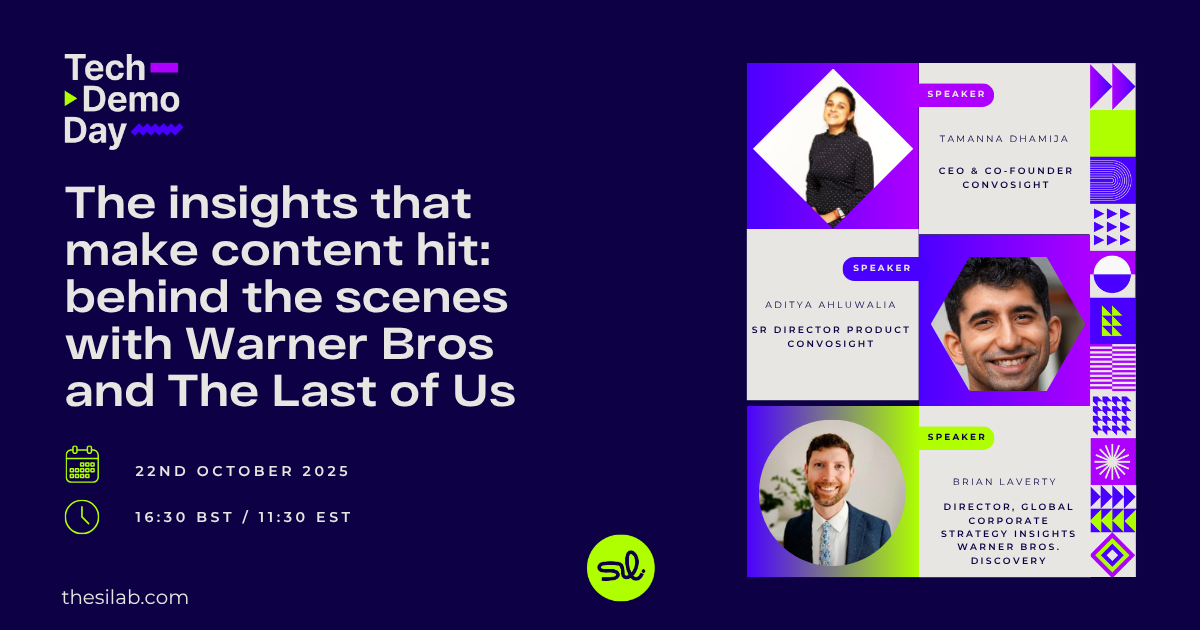
Behind the scenes at social data tech: How can you be a better client to your vendor?
Honesty is the first step to greatness.
We often talk about the ways our tools, tech or agency can serve us better. Depending on the day of the week and the amount of coffee we’ve had, this can range from constructive feedback to, let’s face it, all out moaning. We’re not getting what we want and it’s their fault. After all, we’re the ones parting with the cash.
Our discontent might lead to a terse email or a few words on our next service call. They’ll smile, be helpful, fix the problem, do their best etc etc. And we’ll all go back to being nice, only to run into problems later on again. Why? Because it is very hard for a provider to tell you what you could do better as a client. So we’re doing it for them.
We surveyed the people behind tools and tech in our ecosystem to find out what they really think about the buying process, frustrations, tips for improving, and making the whole process less painful.
Sales
What are we asking?
Unsurprisingly, we’re all asking the same set of questions during the sales process. We want to know the what and the how. What data do you have access to? How do you get the data? How much does it cost? How long will it take to set up? We’re asking some very basic questions, usually based on our immediate concerns (budget, set up times, making sure we’re getting the data we’re used to).
'Many new clients have preconceptions about deployment - that it's going to take weeks of implementation and testing because of the complexity of the models. In reality, we can get a client up and running in a few days.'
Graham Wall, Director New Business and Partnerships, Converseon
Turns out, these questions kinda suck. They’re generic, uninspiring and many of them
can be answered with a blanket response (data sources, how crawling and APIs work)...
...so what should we be asking?
In the eyes of the vendors our most important investigation should be less of the generic and more of the specific. How exactly would our partnership work? How can you meet MY needs?
“Questions around not just the technology but the people and process are vital to discover if we’re a good fit for you.”
Patrick Charlton, Co-Founder & CEO, Buzz Radar.
A big word here is 'problem'. It could be as simple as this - lay out your problem and find out how the tech can solve it. Avoid asking general questions and you’ll avoid getting general answers.
“Could you show me how your platform can solve problem A or problem B we are facing?”
Alexander Nikolov, Enterprise Account Executive, YouScan.
'Help us to understand the “why” and how it maps to key business objectives. It means we can recommend measurement frameworks that provide a much richer view of the data and a straightforward way to communicate the findings to leadership.'
Graham Wall, Director New Business and Partnerships, Converseon.
So aside from asking the right questions, how can we make the sales process less painful?
Another easy fix - be prepared. Firstly, come to the process with an idea of:
- Your problem/needs (2 or 3 problems is ideal apparently) and priorities.
- The gaps you’re trying to fill, particularly if you have another provider or partner already.
And come with extra information:
1. A brief, including target audience if applicable.
2. An export of current data or insights.
3. Current projects or campaigns.
4. Details! You can’t give enough context.
‘It's always great to understand what projects or campaigns people are currently working on / struggling with / or wish they could understand’
Jessica Lewis, Senior Content Manager, Relative Insight.
‘Providing a brief, target audience or an export from their social listening tool is perfect!!’
Luke White, Head of Partnerships, Audiense.
'Identifying the right priorities at the start means we can focus on a solution to real challenges'
Alexander Nikolov, Enterprise Account Executive, YouScan.
Just a thought: Don't go in 'just to see'. Know what the problem you're trying to solve is. However great the tech is, it won't be able to solve a problem that doesn't exist.
We’ve prepared, briefed and contextualised. Then we mess up.
Both parties are interested in seeing if the tech is the right fit for the business and there some recurrent, easily avoided ways we directly contribute to that not happening. The biggest no-nos during the sales phase are:
1. Not staying engaged consistently enough to have meaningful conversations (and therefore keeping things too general).
2. Involving lots of ‘decision makers’ too early creating problems coordinating info and slowing things down.
3. Not asking for the answers, content or the information we’re specifically missing.
4. Not planning beyond getting the data.
So we’d all be better off if we simply;
1. Commit to working together with the sales rep.
2. Assigned a single contact who will distribute info/ask questions etc to ensure the conversation flows.
3. Ask for personalised, specific content to help with your decision.
4. Looked at the ways we’re going to use the data.
One of the first questions we always like to understand is, once you have the insights you need… what levers are in place for you to make those insights actionable.
Partick Charlton, Co-Founder & CEO, Buzzradar.
Just a thought: do we carve out enough time and thinking space to the process on our end? When we start the conversation, do we leave it to the sales rep to work out the next steps?
Getting results from tech
Why are clients not getting the most from their tools?
We have high expectations. Too many of us, it seems, are looking for results too quickly and not being prepared to commit time to the process, despite being guided. We’re likely focusing on the technology itself rather than the problems and the way the tech can help us find a solution (‘putting process ahead of purpose’). We’re expecting technology to do everything, forgetting the vital part humans play. Oh and we’re not speaking to the people at our vendor partners often enough.
‘I think trying to use one solution for every problem. Sometimes you'll need one tool, other times a stack - but that stack can also vary.’
Roisin Mcnamara, Audiense.
‘The reality is that technology is likely only 1/3 of the answer to meet a marketing challenge. The people who will be using it and their process of how to extract insight and implement that insight is key to any successful project.’
Patrick Charlton, Co-Founder & CEO, Buzzradar.
So what can we do?
The top tips for getting more out of our tech (and therefore our social intelligence programmes).
Communicate: almost every single vendor we spoke to said that clients would get more from them by improving their communication. As we’ve already seen, share the goals, but then share the results and everything in between. Nobody said they speak to their clients TOO often.
‘Communicate. It's hard to fix problems we aren't aware of!’
Alexander Nikolov, Enterprise Account Executive, YouScan.
Learn in-house: build expertise in consumer insight within their organization. If we have the skills and understanding in-house, we’ll know better how to use the tool and be less annoyed when something goes wrong (for example, it’s important to understand that data might be hard to fetch sometimes and it can be unstable).
‘Context: Tell us the story of what you are trying to do and why. It gives us the opportunity to think sideways and maybe tackle a challenge from another angle.’
Patrick Charlton, Co-Founder & CEO, Buzzradar.
‘Share the end result/goal of work - helps to facilitate learning/product development and partnership.’
Roisin Mcnamara, Product Specilaist, Audiense.
Have a wider view: as a client, we can work with the vendor to make social intelligence better. Sharing our work will mean we can improve tech products and we can stay top of our game. Lots of us need to be more aware of the vendor as a business and the industry as a whole. Expressing it would benefit us - for example we could be a first user of a new feature before wider release.
‘Clients could definitely do more with their vendors in terms of collaborating on PR pieces to put their companies out there in a specific industry, or as a thought leader of a particular topic.’
Jessica Lewis, Senior Content Manager, Relative Insight.
'Break-down the communication barriers between vendors providing complementary services. We frequently are able to problem solve and to deliver more value if we talk to each other. It’s for the mutual benefit of all parties involved.’
Graham Wall, Director New Business and Partnerships, Converseon.
Just a thought: are we losing out on valuable insights by keeping quiet? Are we sharing what’s going right as well as what’s going wrong? Are we even sharing at all? The conversation doesn’t stop once the contract is signed.
So, in an ideal world, what should the tech<>client relationship really be like?
Across the board, the tools unanimously spoke about collaboration, with ‘partnership’ being the most popular way to describe the way this relationship should work. We also had ‘trust’, ‘honesty’ and ‘open’.
What partnerships means to the vendors;
As with any relationship, vendor relationships are not a one way street. They also take time to build. Don't be scared to get in touch with your vendor.
They're not going to solve all your problems for you if you don't have a clear, ongoing direction.
This is about testing and learning together. Every business is different so every solution needs to be tailored to the business. We need to be vocal when something isn't working or for new things you want to do but don't know how.
‘Our best clients are the ones we talk to most days and they ask us challenging questions where we have to look to push the capabilities of our technology or the imagination and critical thinking or our insights team.’
Patrick Charlton, Co-Founder & CEO, Buzzradar.
Finding success in social intelligence relies on more than just good tech. As clients, we have more to do to help the vendors support us in reaching our goals. That starts with knowing what our goals are in the first place. Then we need to learn more, talk more and view this as a partnership.
See the tech and tools in a new way at SI Tech Demo Day. Access all the presentations from this year's event, on demand
This interview was recorded via LinkedIn Live, if you prefer to view on LinkedIn, click the button below.
View InterviewSee related content

%20(2)%20(1).png)



%20(1).jpeg)



